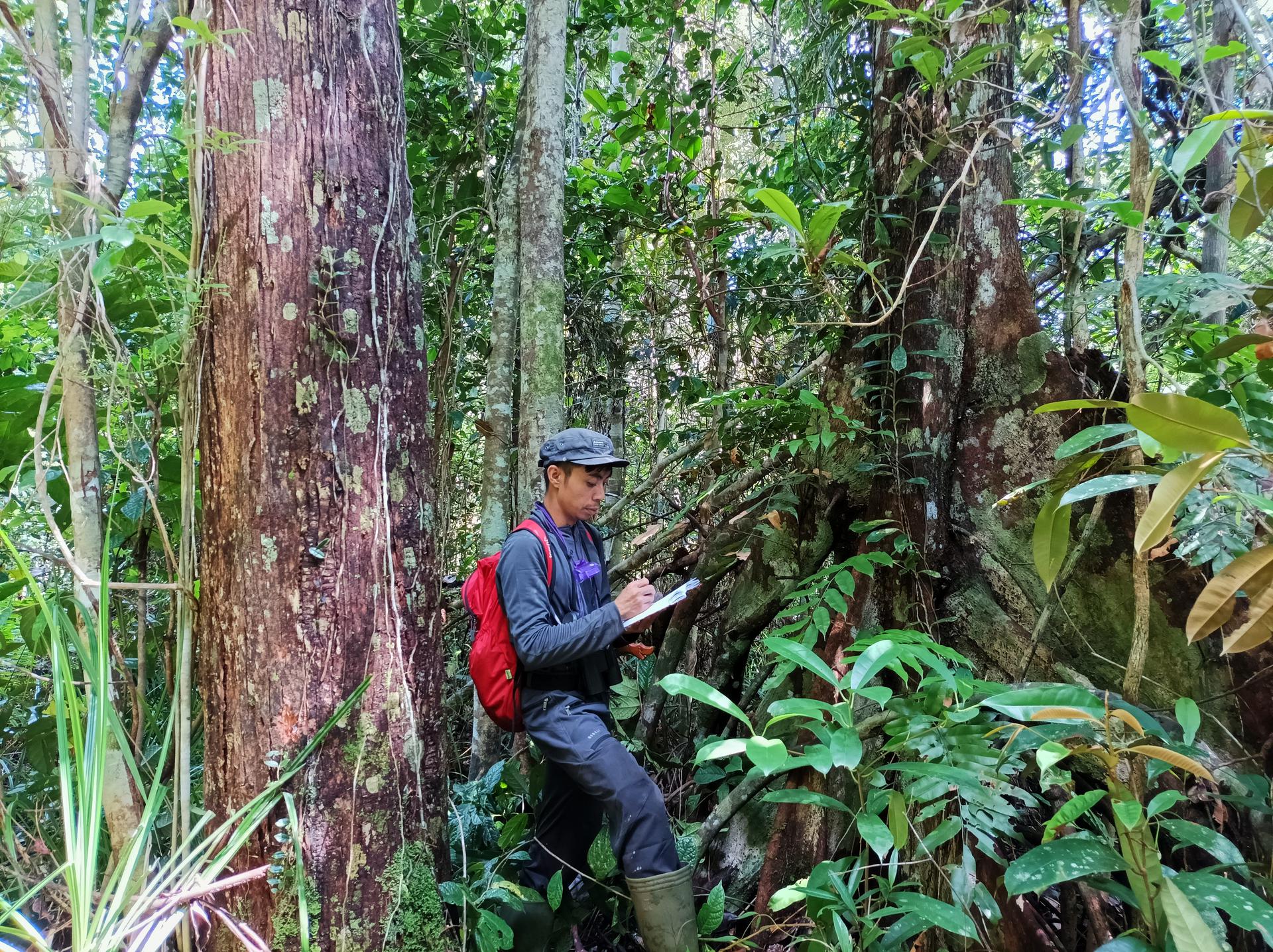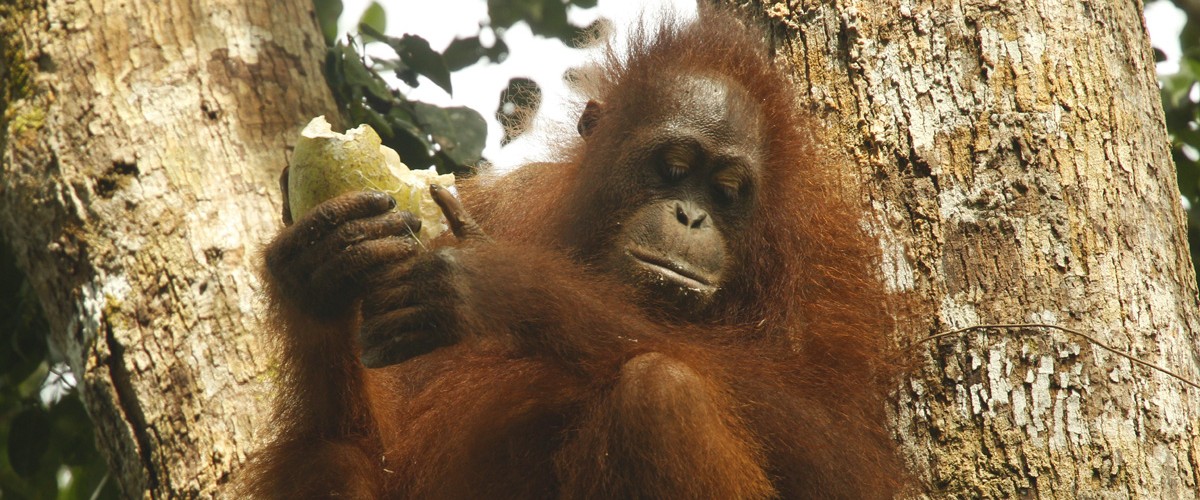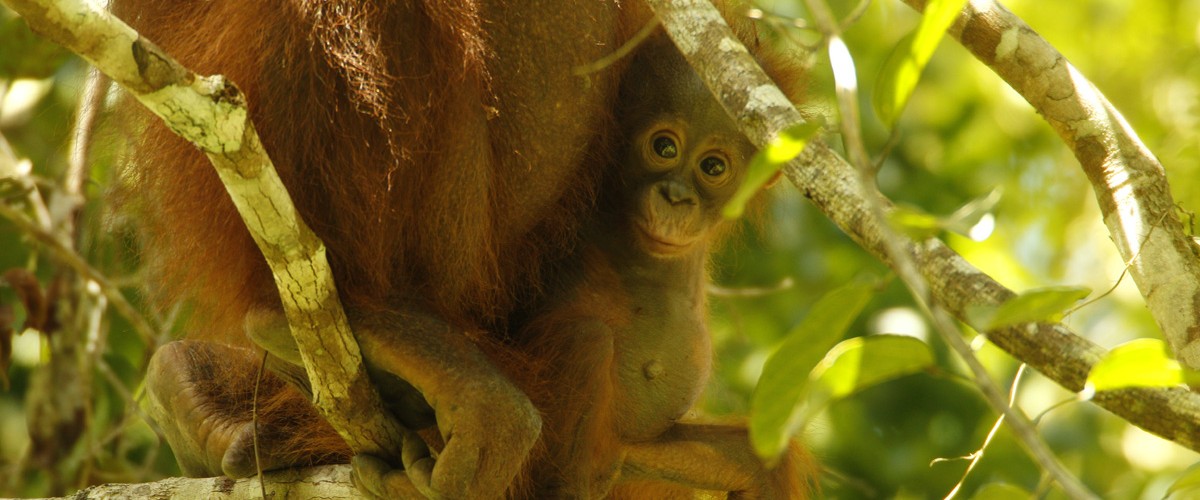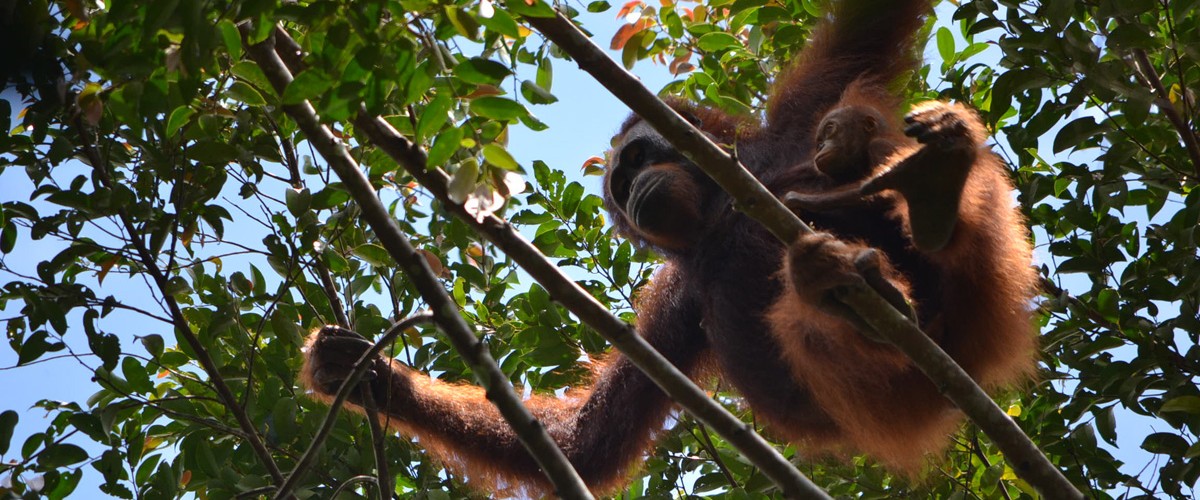By Andre Ronaldo, Botanist and Survey Coordinator
Hutan Desa (which directly translates to “village forests”) are forests where the community has been given management rights with the aim of preserving the forest and the welfare of the surrounding community. Hutan Desa play an important role in supporting the preservation of biodiversity, including the survival of various types of wildlife within it. In our efforts to help manage Hutan Desa, we conduct surveys on the orangutan population and orangutan habitat quality each year.
In 2021, we conducted surveys of the quality of orangutan habitat in 6 of the Hutan Desa which are assisted by Yayasan Palung/GPOCP. Specifically, this was within the Sungai Paduan protected forest landscape (with the Hutan Desa of Padu Banjar, Nipah Kuning, Pemangkat and Pulau Kumbang) and in the production forest landscape of Sungai Purang (with the Hutan Desa of Penjalaan and Rantau Panjang).

During these surveys we sampled 16 transects with a length of 1000 meters each, and within these were 64 plots measuring 10 x 100 meters. Each transect was divided into 4 plots, with a spacing of 200 meters between each plot. We then recorded all types of trees within these plots with a diameter of 10cm or greater.
The habitat at these survey locations is generally secondary peat swamp. Based on the survey results from last year, 102 different tree species were recorded in the Sungai Paduan landscape, and 94 species were found in the Sungai Purang landscape. The species with the highest importance value index (IVI) in Sungai Paduan was Listea gracilipes with an IVI of 30.82%, followed by Lithocarpus bancanus (IVI 22.23%) and Stemonurus secundiflorus (IVI 15.96%). Meanwhile, the highest IVI in Sungai Purang was Alseodaphne bancana (IVI 23.51%), followed by Listea angulate (IVI 17.47%) and Elaeocarpus masterii (IVI 15.96%).
A high IVI value means that plants have better adaptability, competition and reproductive ability than other plants. On the other hand, plants with a low IVI may even have the potential to disappear from the local ecosystem because of their small numbers. The number and distribution of trees in both of these landscapes that we surveyed indicate that the forests are generally disturbed because the dominant species typical of peat swamp forests (e.g., Gonystylus bancanus, Dyera costulata, Tetramerista glabra, Palaquium spp., Shorea spp.) are not dominant here, based on the results of the IVI calculation.

The species diversity index (H’) in both landscapes ranged from 3.64 to 3.89 (indicating high species diversity). The species uniformity index (E) in both landscapes ranged from 0.79 to 0.86 (meaning that the distribution of individuals in each species was relatively equal/even). The species richness index (R) in both landscapes ranged from 14.01 to 14.45 (meaning high species richness). Lastly, the species dominance index (C) in both landscapes was the same, at 0.03 (meaning that no single species is dominant).
The percentage of orangutan food trees in both landscapes ranged from 76.08-76.27% (suggesting that these habitats are ideal for orangutans). The ideal habitat for orangutans is forest that has 60-80% orangutan food trees, 80-90% fruit-producing trees and trees with different fruiting seasons, and 30-40% fruiting throughout the year. Several types of orangutan food trees that are common in the Sungai Paduan landscape include Litsea gracilipes, with a density of 44.17 trees/hectare, Lithocarpus bancanus (37.71 trees/ha) and Palaquium cochleariifolium (14.58 trees/ha). In Sungai Purang, the predominant types of orangutan food trees include Litsea angulata (30.63 trees/ha), Elaeocarpus mastersii (23.75 trees/ha), and Palaquium leiocarpum (16.88 trees/ha).

The distribution of orangutan populations is strongly influenced by habitat conditions, especially the productivity of their food-producing trees. In general, based on the analysis of data from these surveys, the two landscapes have relatively equal orangutan habitat quality. Both landscapes are successfully providing safe refuge for orangutan populations in the Gunung Palung landscape. However, it is important to note that during these surveys we also observed forest disturbance from illegal logging and burnt areas, which caused many gaps in the forest canopy. This further emphasizes the importance of our multi-faceted conservation and research approach – no one activity can solve the plight of orangutans on their own.









